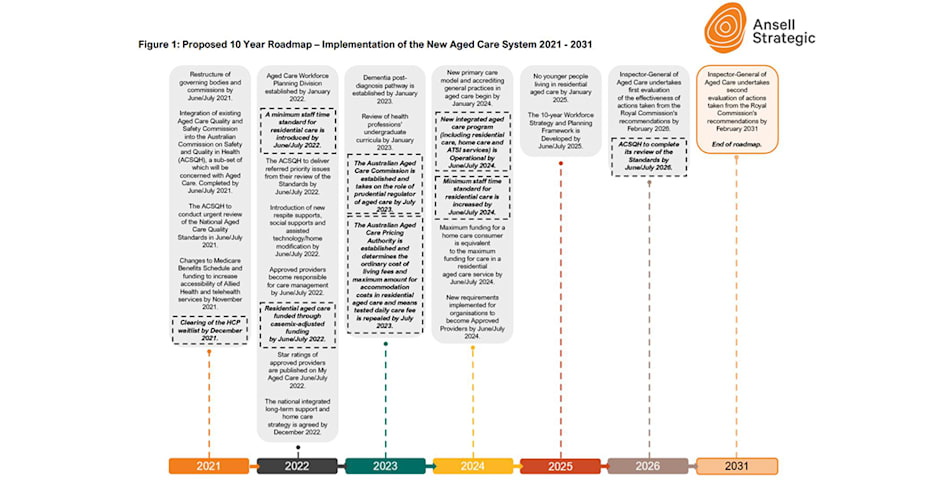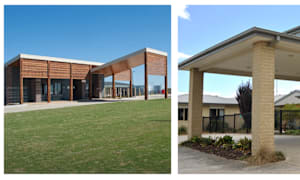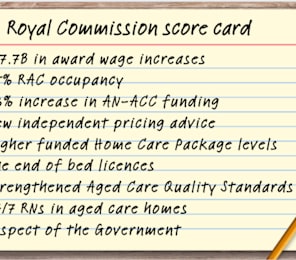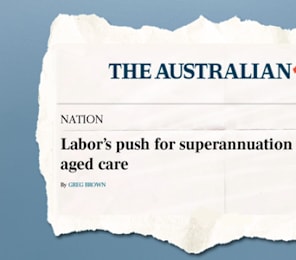The advisory firm has pointed to a number of opportunities – and challenges – in its response to the Royal Commission on the recommendations made by Senior Counsel at the final hearing.
Their nine-page submission states that while the recommendations are “carefully considered” and deliver on “a vision for positive ageing”, the Royal Commission will likely find “some headwinds in places it won’t be expecting”.
With the Royal Commission’s own research suggesting Commonwealth expenditure on aged care will balloon from $20 billion in 2020 up to an eye-watering $171 billion by 2050, Ansell outlines a number of structural and funding considerations for the Commissioners:
Australian Aged Care Commission (AACC) (Recommendations 3 – 6 and 85)
While the argument for an independent body to oversee the sector is “compelling”, Ansell concludes – like Commissioner Lynelle Briggs AO – that the substantial lead-time and set-up would likely bottleneck the process.
“In the context of a post-COVID economic climate, we should be prepared for a scenario in which Government adopts ‘form’ over ‘substance’ and merely rebadges the Department of Health as the new Commission,” they write.
The report back plans to redirect the Department of Health to accommodate the reforms in the recommendations.
Clearing the Home Care Package (HCP) Waiting List (Recommendation 9)
Ansell argues that while clearing the home care queue is an “absolute priority”, the Counsel Assisting’s deadline of 31 December 2021 is “not practicable”.
However, they say it is possible to have a plan in place by the time the Final Report is handed in on 26 February 2021 – Ansell is now working with two of the largest home care provider, Australian Unity and Bolton Clarke, towards developing a roadmap.
They warn that expanding the program will require an Australia-wide growth map tool to determine the supply of workers and need for services by Local Government Authority (LGA) which could be piloted in NSW as the largest state using services.
But the report warns this would be difficult, given the limitations of the aged care data currently collected by the Government plus the need for an estimated 15,200 home care workers who would likely need to be skilled enough to deliver Level 3 and 4 services.
Casemix Funding (Recommendation 88)
Ansell says their opinion is that casemix funding isn’t ideal for residential aged care because of the constantly changing care needs of residents.
But with the Government well advanced on planning to replace ACFI with the AN-ACC model, they say the focus should be on developing an integrated approach between the casemix funding of residential care and the separate funding for home care as the Government moves towards the new aged care program put forward in recommendation 8 and expanding home care.
Minimum Staff Time (Recommendation 47)
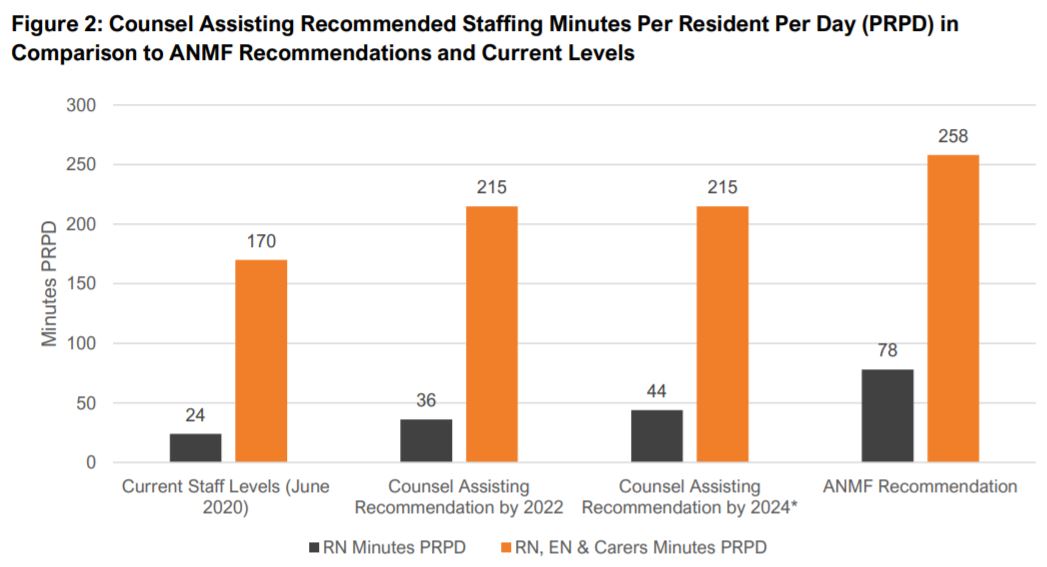 The report applauds the Counsel Assisting for recognising the rigidity of minimum staffing ratios and instead opting for a transition to minimum staffing time.
The report applauds the Counsel Assisting for recognising the rigidity of minimum staffing ratios and instead opting for a transition to minimum staffing time.
However, Ansell states that the roll out of the recommended levels still represent “extremely challenging targets”, particularly around the sourcing of nurses.
They recommend grouping ENs with RNs under the classification rather than personal care workers and an uplift in ACFI to help with transition costs.
Long Term Funding Arrangements
With the Counsel Assisting holding to its view that Australians are willing to pay more for aged care, Ansell points out that this has not traditionally been the case when aged care is not front of mind.
“It is the reason that successive Governments have been able to divert resources away from aged care and the reason we are having a Royal Commission. Most importantly, in a post-COVID environment, it will be politically and practically challenging as the already depleted generations X, Y and Z would be asked to fund the care services of Australia’s wealthiest cohort, the Baby Boomers.”
The answer, they say, is integrating care services with a means testing program that allows consumers to choose to pay more.
Moving to a more medicalised model
The report warns that this comes with a risk however – that the combination of recommendations for casemix funding, integrated Hospital and Aged Care Quality Standards and minimum staffing levels may lead to a more medical/clinical model focus in residential care.
“If we accept that residential aged care facilities may operate more like hospitals (like the United States and UK), the development of home care substitutes become paramount and it is within Recommendation 8 that the solution arrives.”
It is clear that the Royal Commission will recommend a move to a model focused on care at home with more options for older Australians.
The question is now: will the Government want to invest in them?

